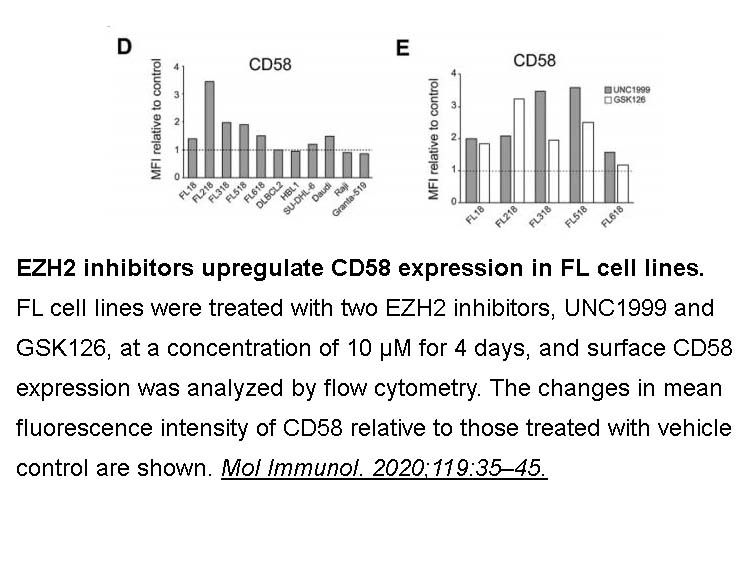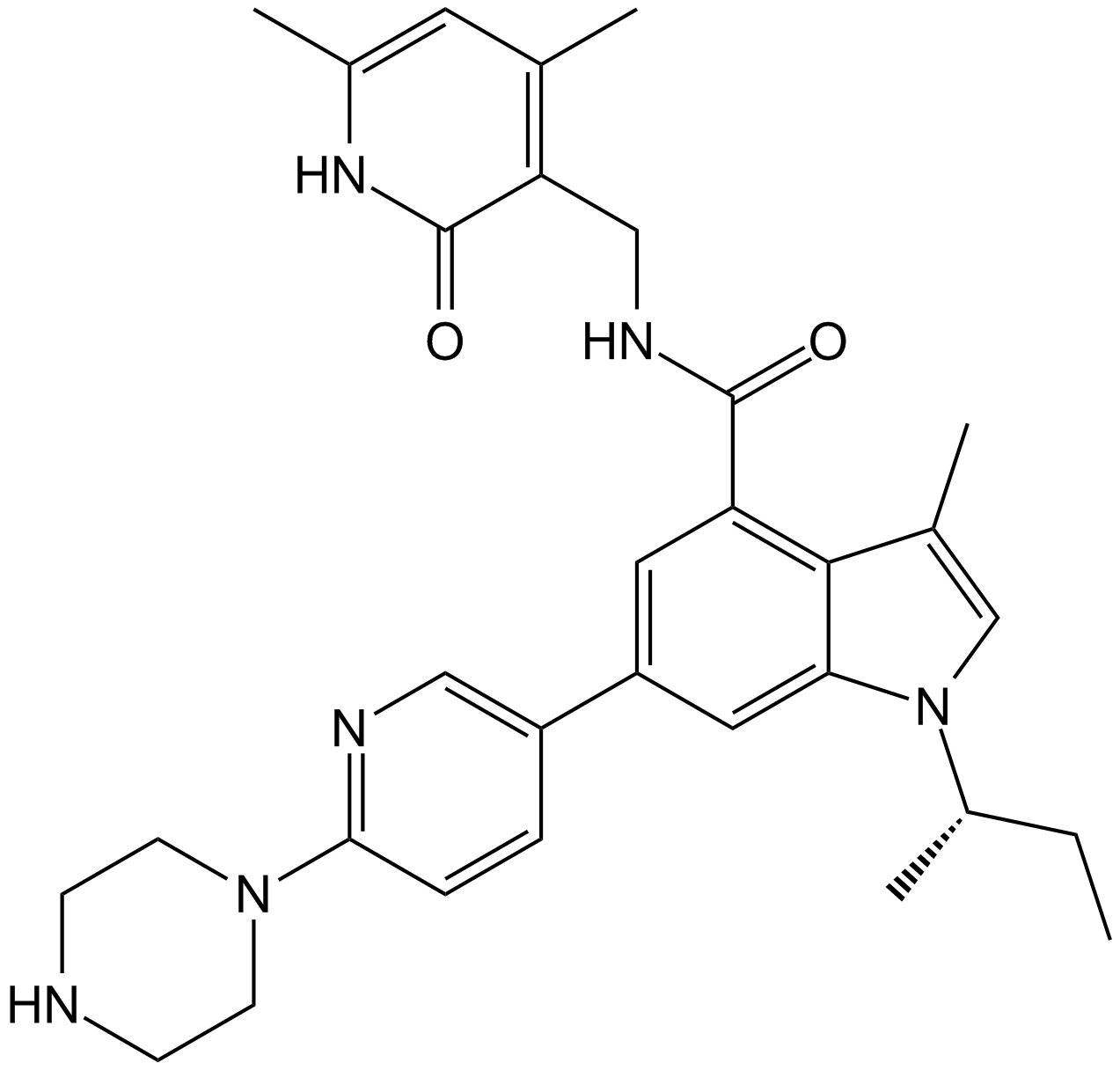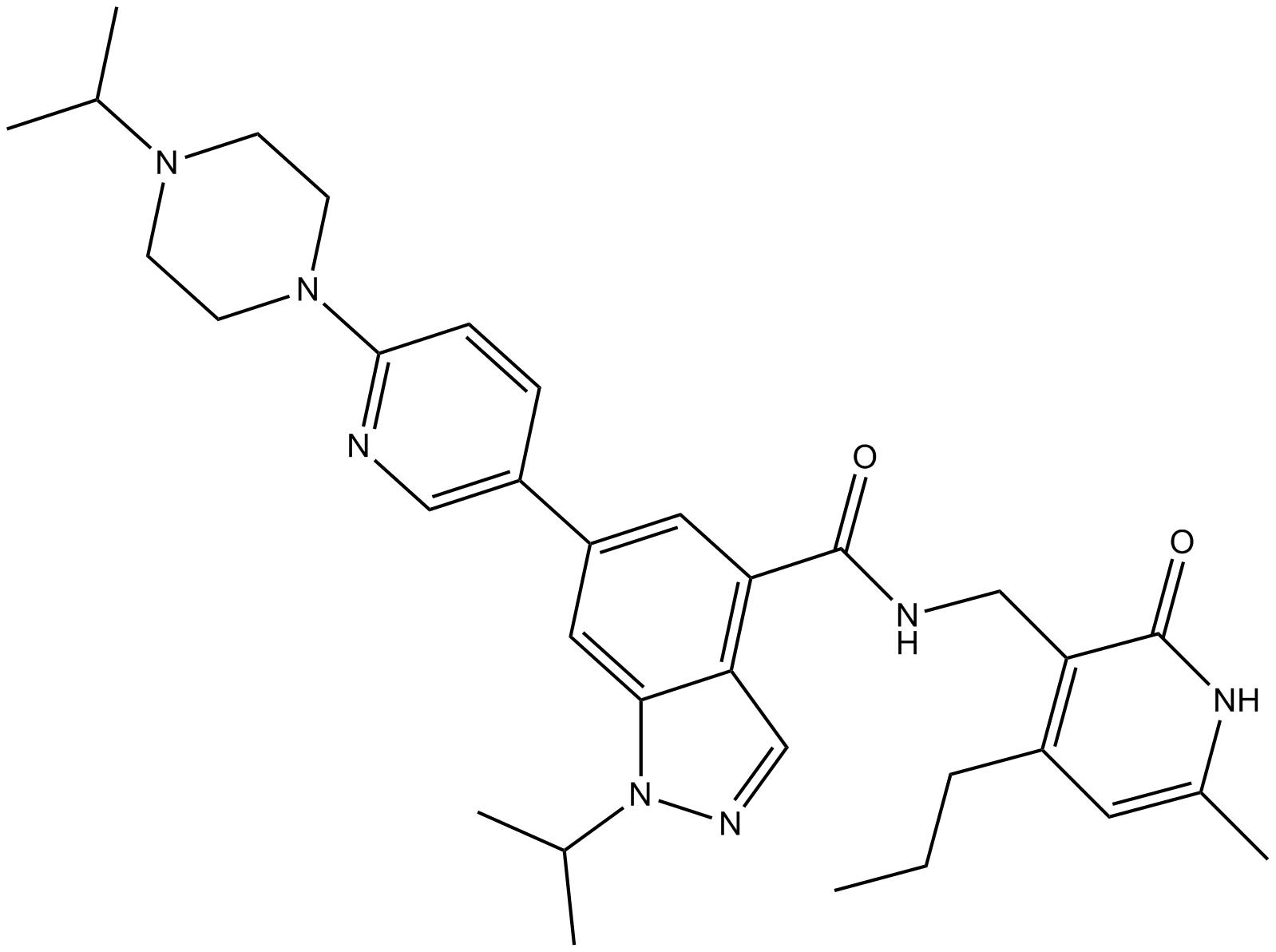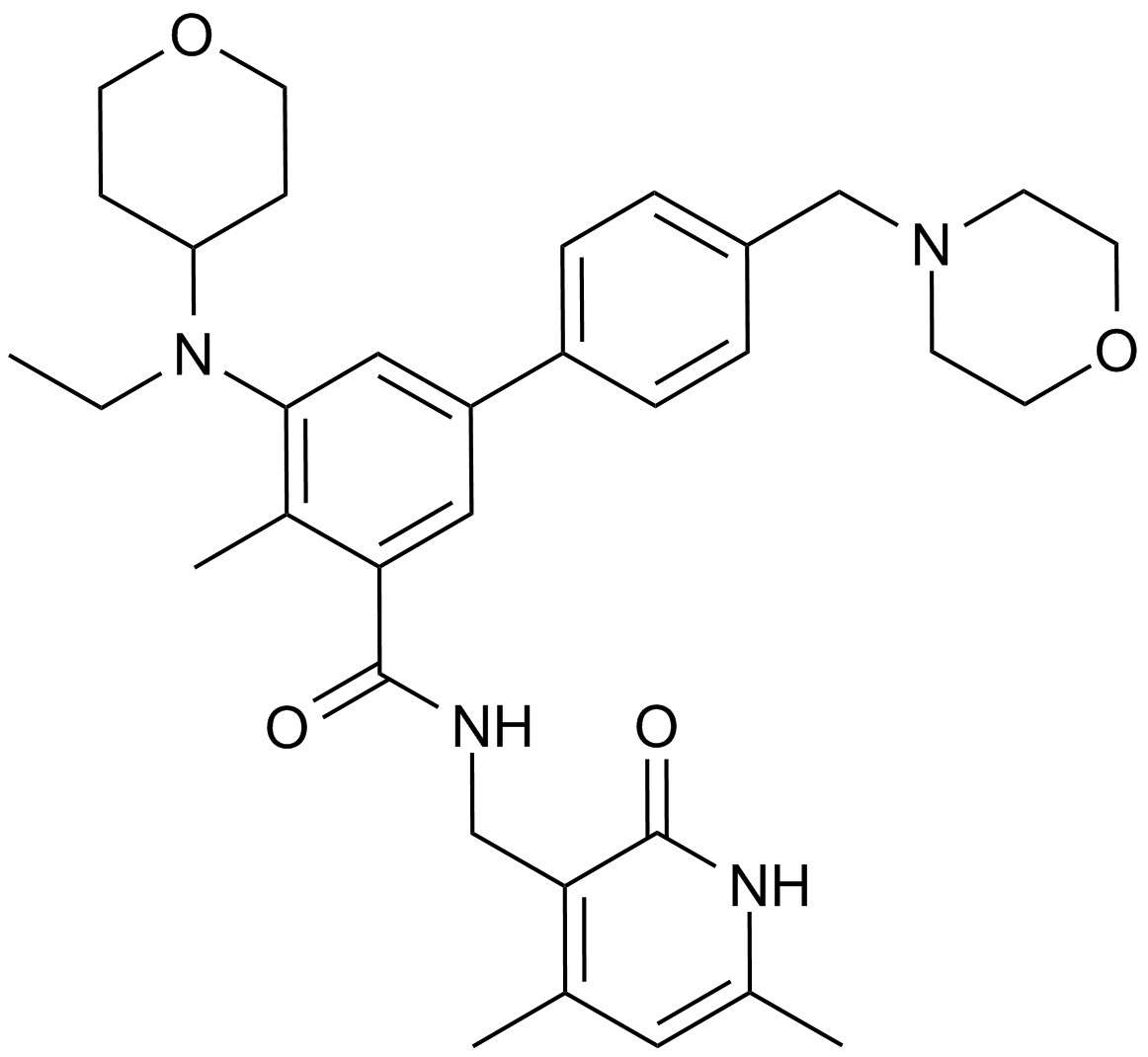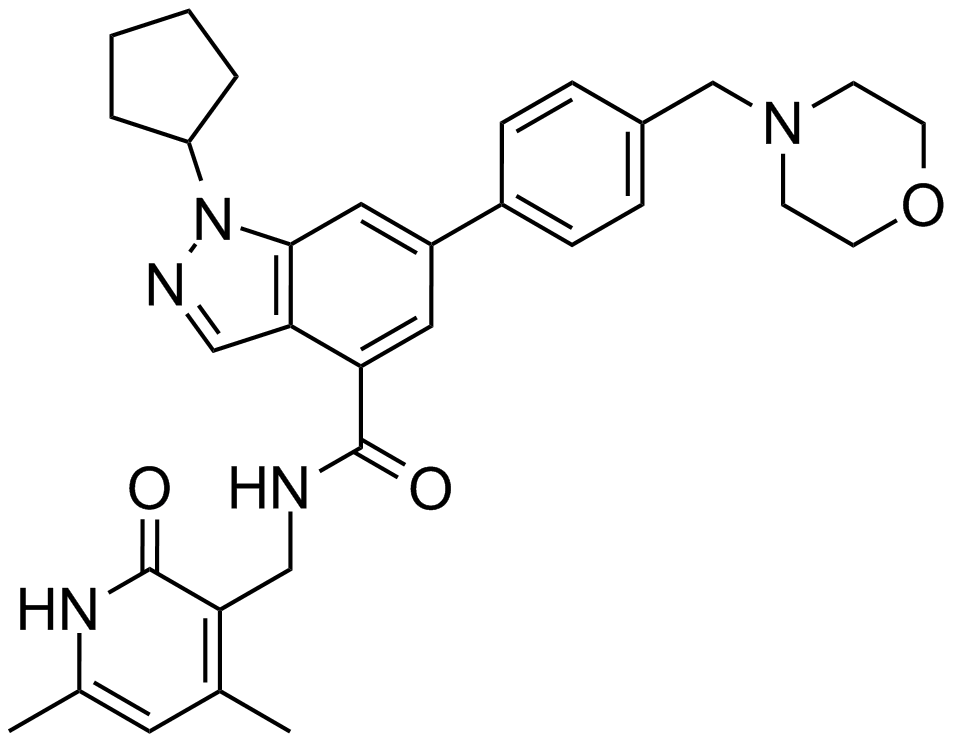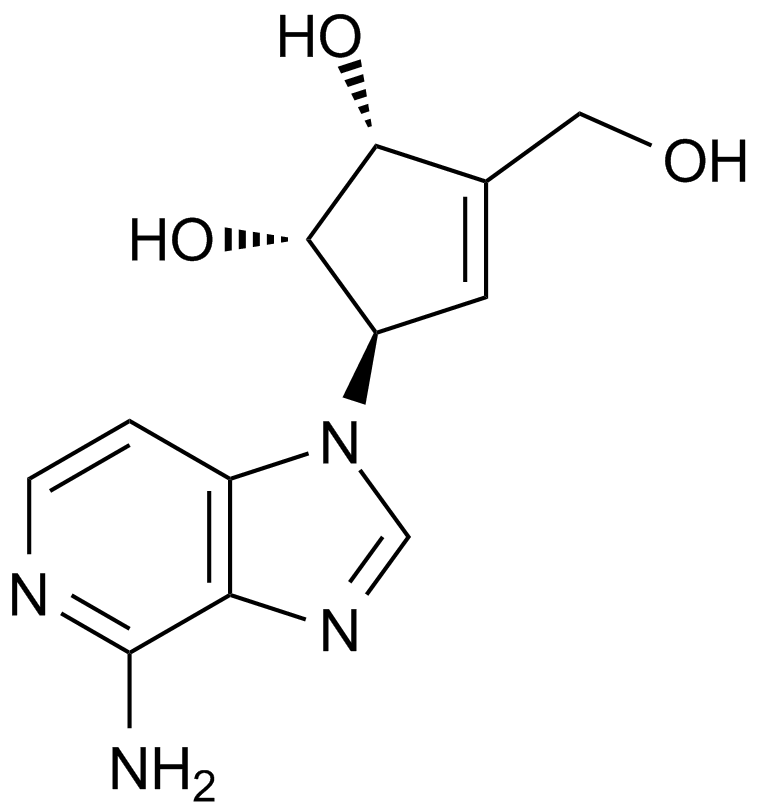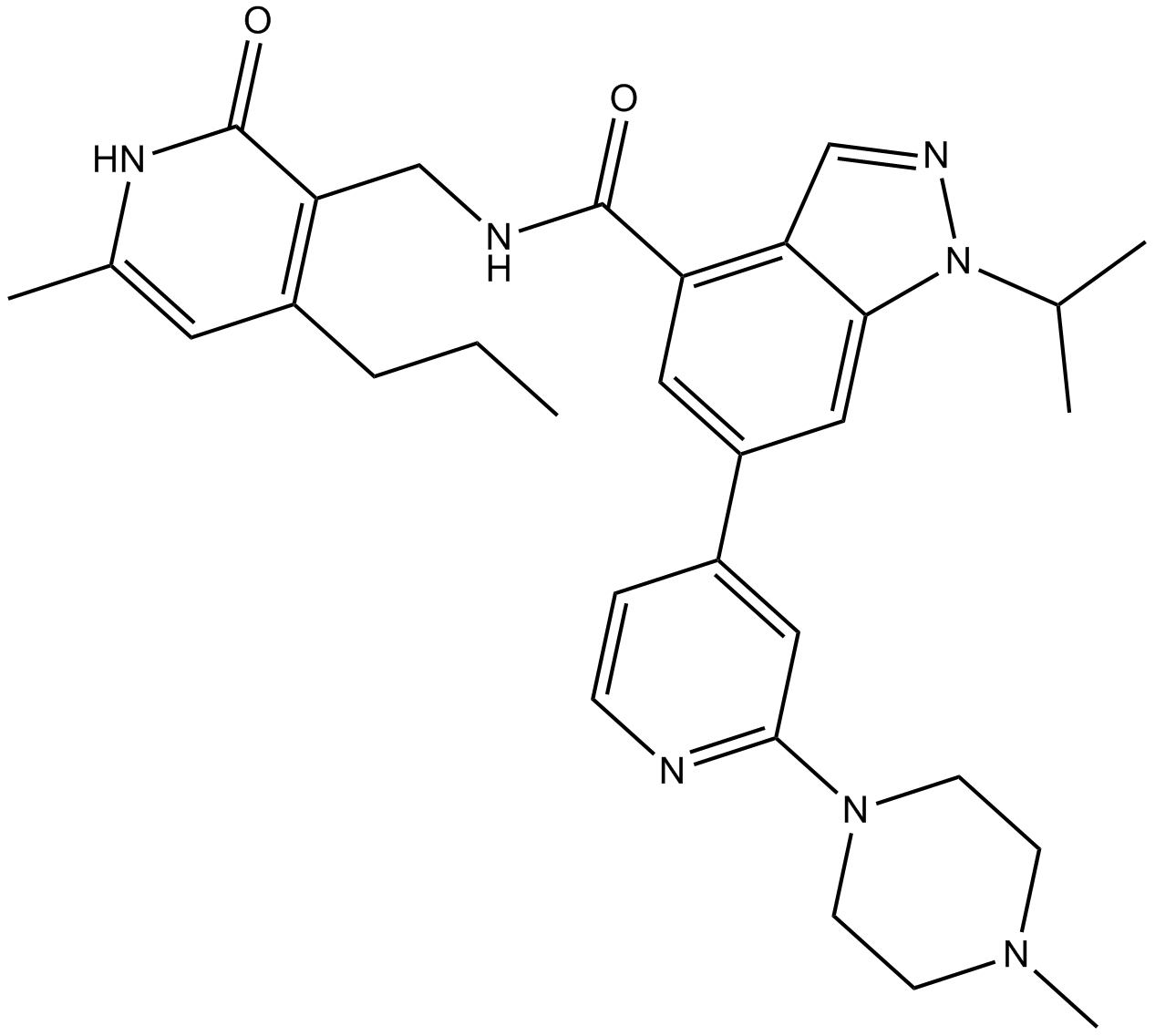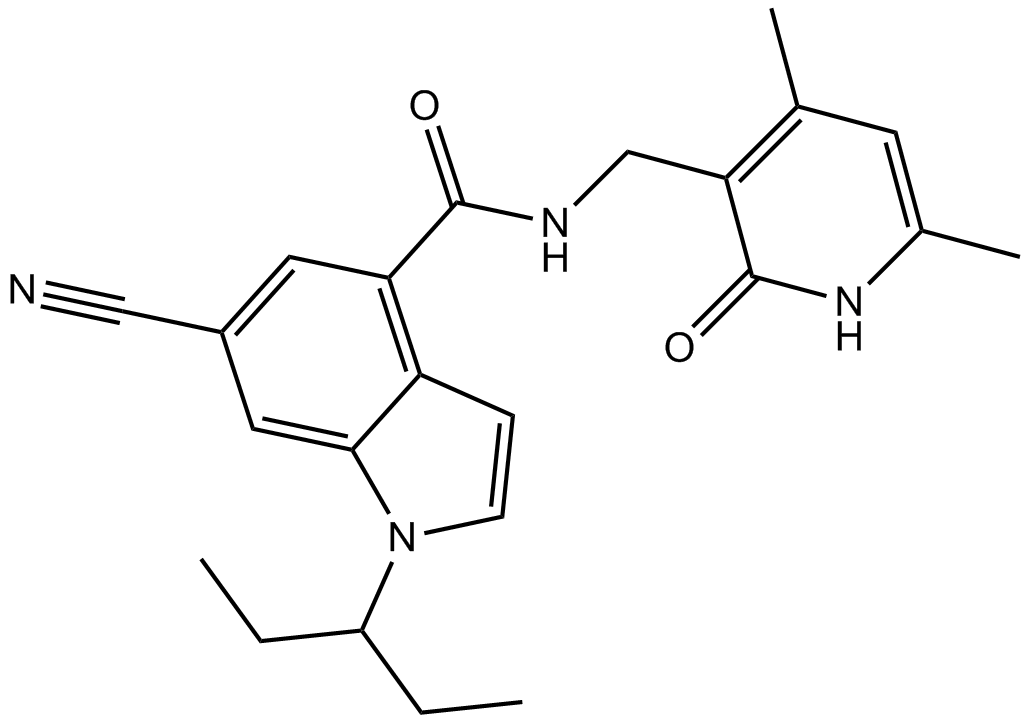GSK126
GSK126 is an inhibitor of EZH2 with Ki Value of 93 pM [1].
Over-expression of EZH2 has been reported to be correlated with cancer progression and poor prognosis, high grade and high stage in several tumor types. GSK126 is a potent inhibitor of EZH2 and its functional residence time on activated form of EZH2/PRC2 is mush longer than unactivated forms [1]. When tested with lymphoma cell lines, results showed that harboring EZH2 mutations such as Y641N, Y641F or A677G were more sensitivity [2]. In DMS53, Lu30, H209 SCLC cells, cellular growth was inhibited with 0.5, 2, and 8 μM GSK126 treatment [3]. And GSK126 could also significantly restore ARNTL expression in ovarian cancer cells thus inhibit cell growth and enhance chemosensitivity of cisplatin [4].
Intermittent dosing of GSK126 treated subcutaneous KARPAS-422 xenografts model could effectively inhibit its growth with or without a 1 week drug holiday. In mouse model with EZH2 mutant DLBCL xenografts, treatment with GSK126 could markedly inhibit its growth [2].
References:
1. Sato, T., et al., PRC2 overexpression and PRC2-target gene repression relating to poorer prognosis in small cell lung cancer. Sci Rep, 2013. 3(1911).
2. McCabe, M.T., et al., EZH2 inhibition as a therapeutic strategy for lymphoma with EZH2-activating mutations. Nature, 2012. 492(7427): p. 108-12.
3. Van Aller, G.S., et al., Long residence time inhibition of EZH2 in activated polycomb repressive complex 2. ACS Chem Biol, 2014. 9(3): p. 622-9.
4. Yeh, C.M., et al., Epigenetic silencing of ARNTL, a circadian gene and potential tumor suppressor in ovarian cancer. Int J Oncol, 2014. 45(5): p. 2101-7.
- 1. Hongmeng Su, Luyu Zhao, et al. "Identification of ETV5 as a prognostic marker related to epigenetic modification in pan-cancer and facilitates tumor progression in hepatocellular carcinoma." Scientific Reports volume 14, Article number: 29695 (2024)
- 2. Amador Gallardo, Lourdes López-Onieva, et al. "EZH2 represses mesenchymal genes and upholds the epithelial state of breast carcinoma cells." Cell Death Dis. 2024 Aug 22;15(8):609 PMID: 39174513
- 3. Minggang Fang, et al. "EZH2 inhibition reactivates epigenetically silenced FMR1 and normalizes molecular and electrophysiological abnormalities in fragile X syndrome neurons." Front Neurosci. 2024 Feb 21:18:1348478. PMID: 38449737
- 4. Amador Gallardo, Lourdes López-Onieva, et al. "EZH2 represses mesenchymal genes and upholds epithelial identity in breast cancer cells." bioRxiv. November 07, 2023.
- 5. Baokun Sui, Dong Chen, et al. "A novel antiviral lncRNA, EDAL, shields a T309 O-GlcNAcylation site to promote EZH2 lysosomal degradation." Genome Biol 2020 Sep 1;21(1):228. PMID: 32873321
- 6. Meng XL, Fu P, et al. "Increased EZH2 Levels in Anterior Cingulate Cortex Microglia Aggravate Neuropathic Pain by Inhibiting Autophagy Following Brachial Plexus Avulsion in Rats." Neurosci Bull. 2020;10.1007/s12264-020-00502-w. PMID: 32346844
- 7. Silasi M, You Y, et al. "Human Chorionic Gonadotropin modulates CXCL10 Expression through Histone Methylation in human decidua." Sci Rep. 2020;10(1):5785. PMID: 32238853
- 8. Otsuka Y, Nishikori M, et al. "EZH2 inhibitors restore epigenetically silenced CD58 expression in B-cell lymphomas." Mol Immunol. 2020;119:35–45. PMID: 31962268
- 9. Liu Y, Niu Y, et al. "Tat expression led to increased histone 3 tri-methylation at lysine 27 and contributed to HIV latency in astrocytes through regulation of MeCP2 and Ezh2 expression." J Neurovirol. 2019 Apr 24. PMID: 31020497
- 10. Hübner JM, Müller T, et al. "EZHIP / CXorf67 mimics K27M mutated oncohistones and functions as an intrinsic inhibitor of PRC2 function in aggressive posterior fossa ependymoma." Neuro Oncol. 2019 Mar 29. pii: noz058. PMID: 30923826
- 11. Anastassiia Vertii, Jianhong Ou, et al. "Two Contrasting Classes of Nucleolus-Associated Domains in Mouse Fibroblast Heterochromatin." bioRxiv. 2018 December 03.
- 12. Agnieszka I. Laskowski, Danielle A. Fanslow1,et al. "Clinical Epigenetic Therapies Disrupt Sex Chromosome Dosage Compensation in Human Female Cells." Gender and the Genome 2018, Vol. 2(1) 2-7
- 13. Jalan-Sakrikar N, De Assuncao TM, et al. "Hedgehog Signaling Overcomes an EZH2-Dependent Epigenetic Barrier to Promote Cholangiocyte Expansion." PLoS One. 2016 Dec 9;11(12):e0168266. PMID: 27936185
| Storage | Store at -20°C |
| M.Wt | 526.67 |
| Cas No. | 1346574-57-9 |
| Formula | C31H38N6O2 |
| Synonyms | EZH2 inhibitor;GSK-126;GSK 126 |
| Solubility | insoluble in H2O; insoluble in EtOH; ≥4.38 mg/mL in DMSO with gentle warming |
| Chemical Name | 1-[(2S)-butan-2-yl]-N-[(4,6-dimethyl-2-oxo-1H-pyridin-3-yl)methyl]-3-methyl-6-(6-piperazin-1-ylpyridin-3-yl)indole-4-carboxamide |
| SDF | Download SDF |
| Canonical SMILES | CCC(C)N1C=C(C2=C(C=C(C=C21)C3=CN=C(C=C3)N4CCNCC4)C(=O)NCC5=C(C=C(NC5=O)C)C)C |
| Shipping Condition | Small Molecules with Blue Ice, Modified Nucleotides with Dry Ice. |
| General tips | We do not recommend long-term storage for the solution, please use it up soon. |
| Kinase experiment [1]: | |
|
Inhibitory activities |
Biochemical assays used the five-member PRC2 complex (human Flag-EZH2, EED, SUZ12, AEBP2, RbAp48) containing either wild-type or mutant EZH2, [3H]-SAM and histone H3 peptides (21-44) with K27me0, K27me1 or K27me2 were used as substrates, reactions were incubated for 30 min. Global histone modification levels were determined by enzyme-linked immunosorbent assay (ELISA) or western blot methods using antibodies specific for total histoneH3, H3K27me1, H3K27me2 orH3K27me3. |
| Cell experiment [2]: | |
|
Cell lines |
Lu130, H209, and DMS53 small cell lung cancer (SCLC) cell lines. |
|
Preparation method |
Dissolved in DMSO. General tips for obtaining a higher concentration: Please warm the tube at 37°C for 10 minutes and/or shake it in the ultrasonic bath for a while. Stock solution can be stored below -20°C for several months. |
|
Reaction Conditions |
0.5, 2, and 8 μM; 72, 144, 192 h. |
|
Applications |
GSK126 inhibited cell growth in all the three cell lines at 8 μM. |
| Animal experiment [1]: | |
|
Animal models |
Mice using subcutaneous xenografts of KARPAS-422 and Pfeiffer cells. |
|
Dosage form |
15, 50, 150 mg/kg, 10 days of once daily; 300 mg/kg twice per week; administered intraperitoneally. |
|
Applications |
GSK126 decreases H3K27me3 and increases gene expression in a dose-dependent way. GSK126 completely inhibited tumour growth at 50 mg/kg and increases survival of mice bearing the more aggressive KARPAS-422 tumours. GSK126 was well tolerated at the doses and schedules examined as measured by little to no decrease in body weight. |
|
Other notes |
Please test the solubility of all compounds indoor, and the actual solubility may slightly differ with the theoretical value. This is caused by an experimental system error and it is normal. |
|
References: [1]. McCabe MT, Ott HM, Ganji G, et al. EZH2 inhibition as a therapeutic strategy for lymphoma with EZH2-activating mutations. Nature, 2012, 492(7427): 108-112. [2]. Sato T, Kaneda A, Tsuji S, et al. PRC2 overexpression and PRC2-target gene repression relating to poorer prognosis in small cell lung cancer. Sci Rep, 2013, 3: 1911. |
|
Quality Control & MSDS
- View current batch:
Chemical structure
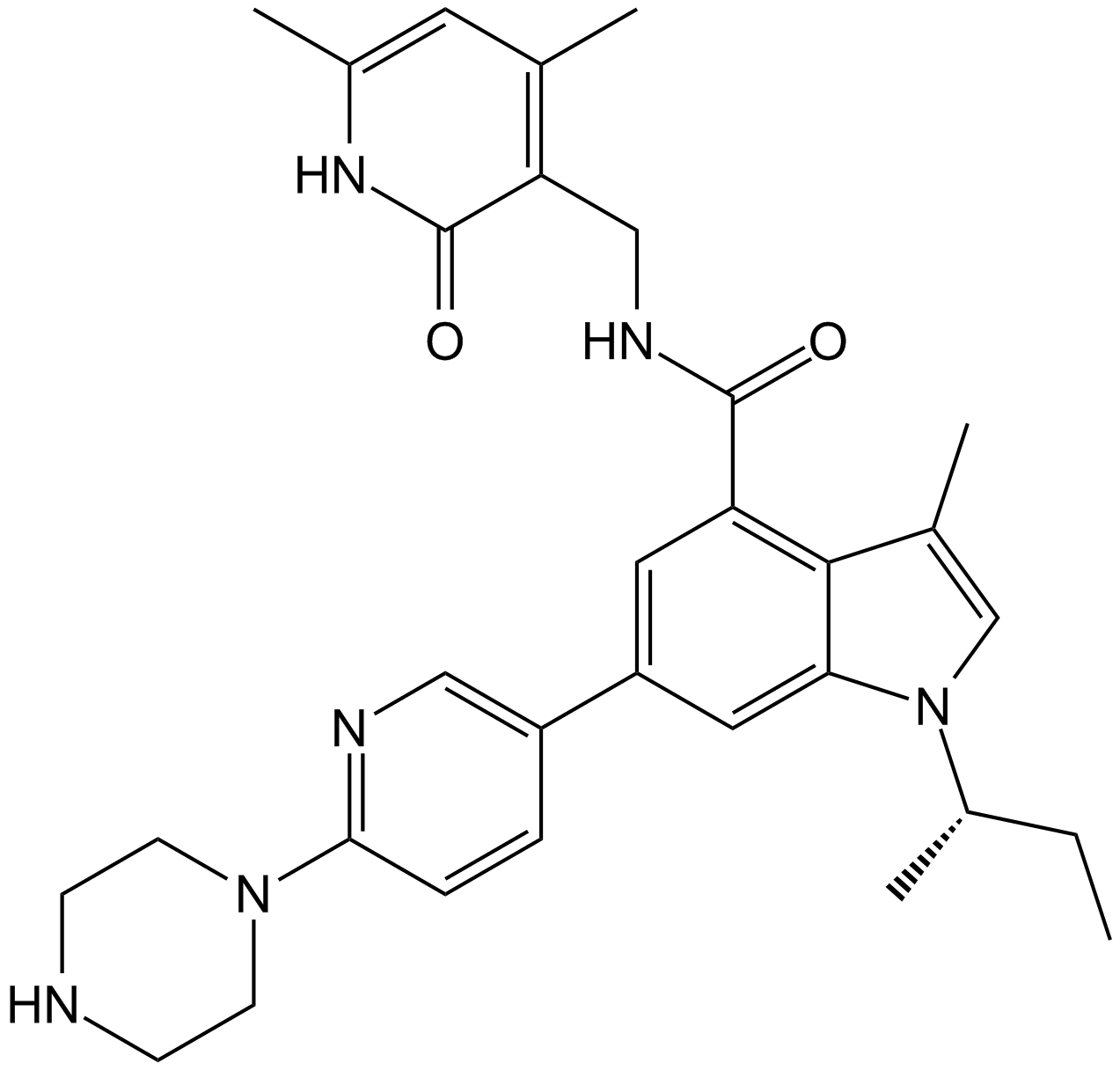
Related Biological Data
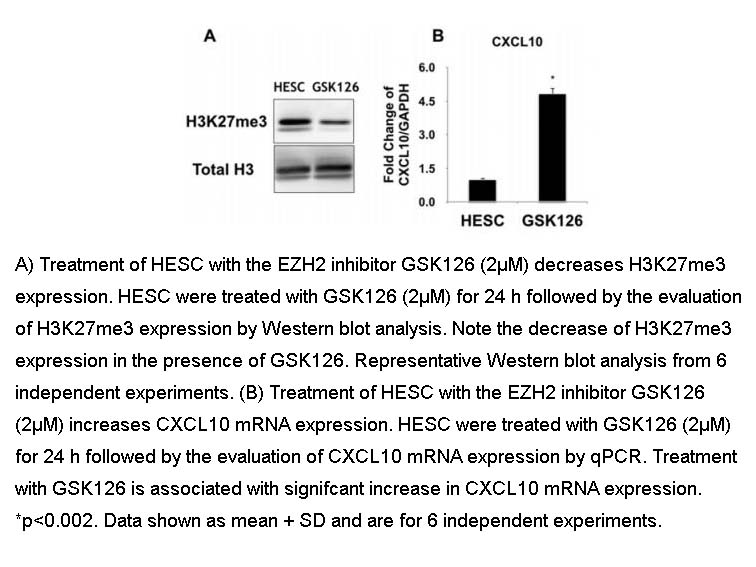
Related Biological Data
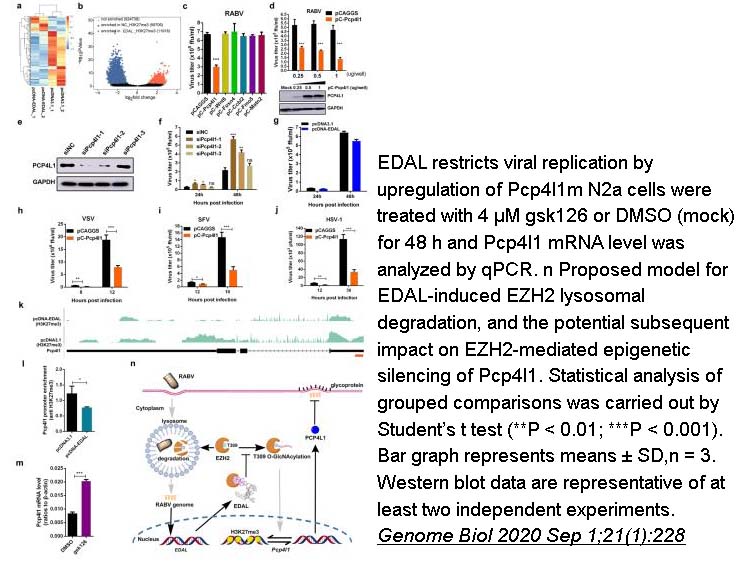
Related Biological Data
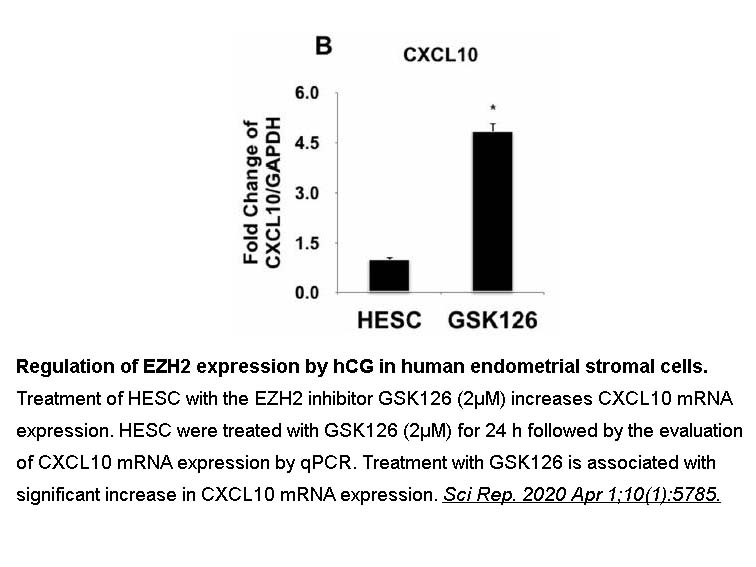
Related Biological Data
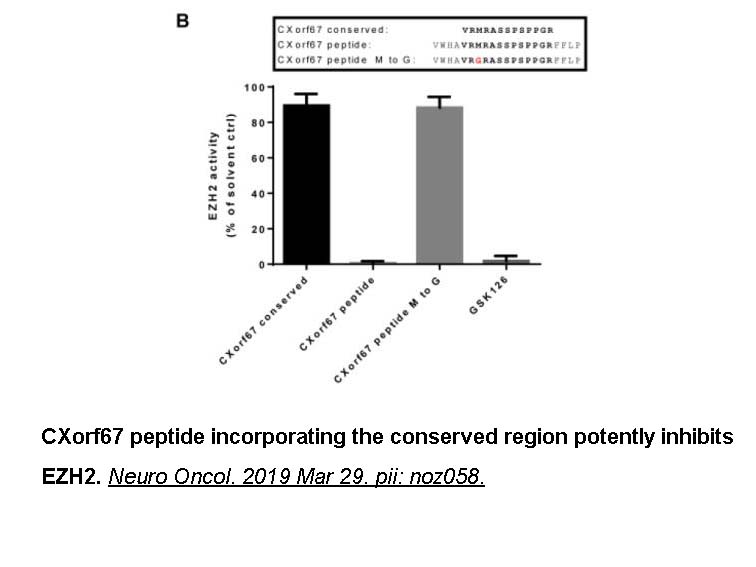
Related Biological Data
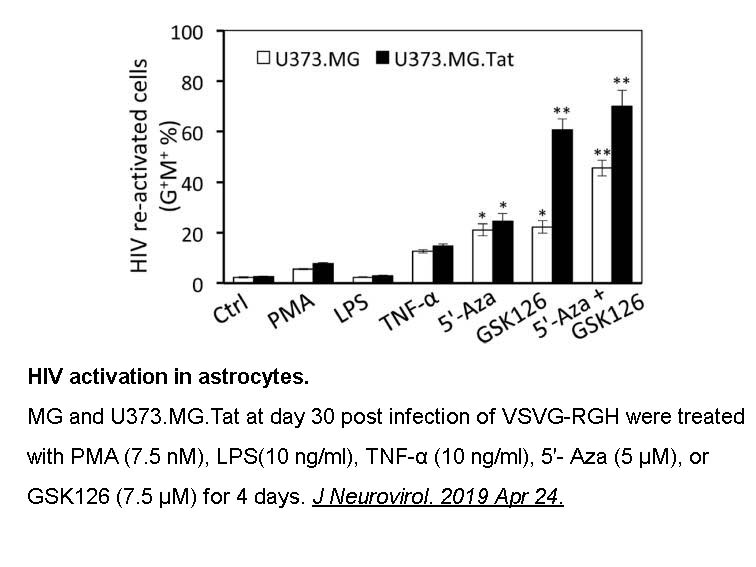
Related Biological Data
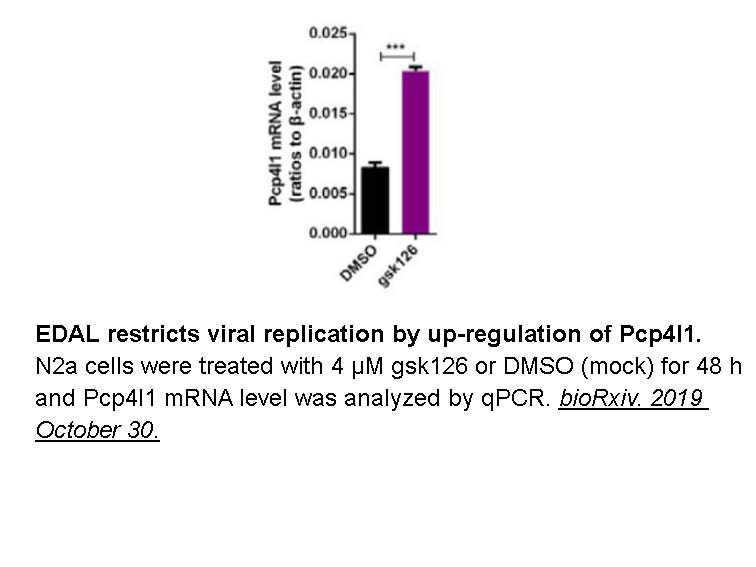
Related Biological Data
